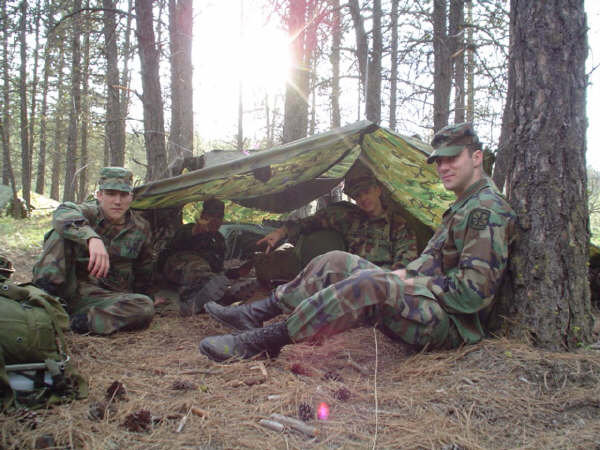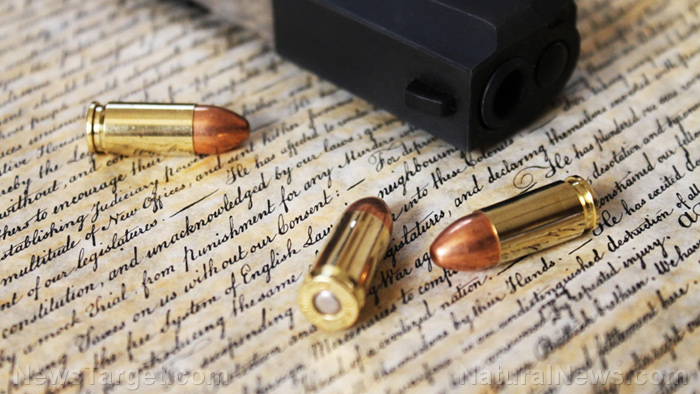Personal safety and survival: Choosing the right kind of body armor
12/08/2021 / By Virgilio Marin

Survival gear is important to protect yourself from attackers during SHTF. Weapons like firearms, ammunition and knives are common enough that most preppers have them already. But have you considered keeping body armor? (h/t to PreppersWill.com)
Choosing the right type of body armor
Body armor is any protective clothing designed to absorb or deflect physical attacks. It can be covert or overt. A covert vest is worn underneath your normal clothes and is thin enough to allow you to move freely. Most covert vests lack pockets which is a disadvantage if you’re looking for ammunition storage.
An overt vest, on the other hand, is thicker than a covert vest and provides maximum level protection against ballistic fire. It is ideal for ammunition storage but can be quite cumbersome. Wearing an overt vest also makes you a target since it’s worn over your normal clothing.
There are several types of body armor, each of which protects against certain kinds of weapons. Check out the following:
Bulletproof vest
Bulletproof vests provide ballistic protection by absorbing the impact of bullets or projectiles. They are not meant to protect against edged and spiked weapons since ballistic weapons impact a body armor differently.
Bulletproof vests are categorized into five levels, each of which specifies the calibers of bullets that vests can protect against. The first three levels are considered “soft” while the latter two are considered “hard.” The difference between soft and hard body armors rests on the bullet-resistant materials used.
Soft body armors use strong, flexible materials like Kevlar and are lightweight, soft and comfortable to wear. They come in either covert or overt vests. If you live in a hot climate, wearing a soft body armor is the way to go.
On the other hand, hardbody armors use materials like ceramic, steel or titanium plates, which are well-suited to stopping high-caliber ammunitions. They resemble soft armors in terms of appearance but are much thicker and heavier due to the materials used.
Stab-proof vest
Stab-proof vests are designed to protect against knife attacks to your chest, back and sides. They are made of some of the materials used for bulletproof vests but also require materials like chain mail and laminate to stop edged blades from cutting the protective fibers of the vest.
Chain mail is more stab-resistant and heavier than laminate. Unlike the latter, however, it cannot protect against spike weapons.
Spike-proof vest
Spike-proof vests provide protection against pointed weapons like needle guns and screwdrivers. These weapons can pass through the minuscule space between Kevlar fibers, which is why spike-proof vests incorporate additional materials like plastic. In most spike-resistant body armors, layers of Kevlar fibers are laminated to create a tough surface that can stop penetration.
It is important to distinguish between spike-proof and stab-proof vests because not all stab-resistant armors offer spike protection. Similarly, not all spike-proof armors can protect against bladed weapons.
Multi-threat armor
Multi-threat armors provide protection against different types of weapons. In some stab-resistant body armors, the Kevlar plates are laminated to make them spike-resistant too. Multi-threat armors are ideal when you have limited knowledge of the weapons available to your potential attackers. (Related: Always ready: Prepper gear for short- and long-term survival.)
Ideally, your body armor should be able to protect against firearms, knives and pointed weapons for maximum protection. However, you should not sacrifice stealth when choosing a body armor since keeping things low-key is also an effective survival strategy.
Sources include:
Tagged Under: body armor, bulletproof vest, chaos, Gear, personal protection, personal safety, preparedness, prepper, prepping, protective clothing, self-defense, SHTF, survival, survival essentials, survival gear, survivalist
RECENT NEWS & ARTICLES
COPYRIGHT © 2018 SELFDEFENSE.NEWS
All content posted on this site is protected under Free Speech. SelfDefense.news is not responsible for content written by contributing authors. The information on this site is provided for educational and entertainment purposes only. It is not intended as a substitute for professional advice of any kind. SelfDefense.news assumes no responsibility for the use or misuse of this material. All trademarks, registered trademarks and service marks mentioned on this site are the property of their respective owners.

















